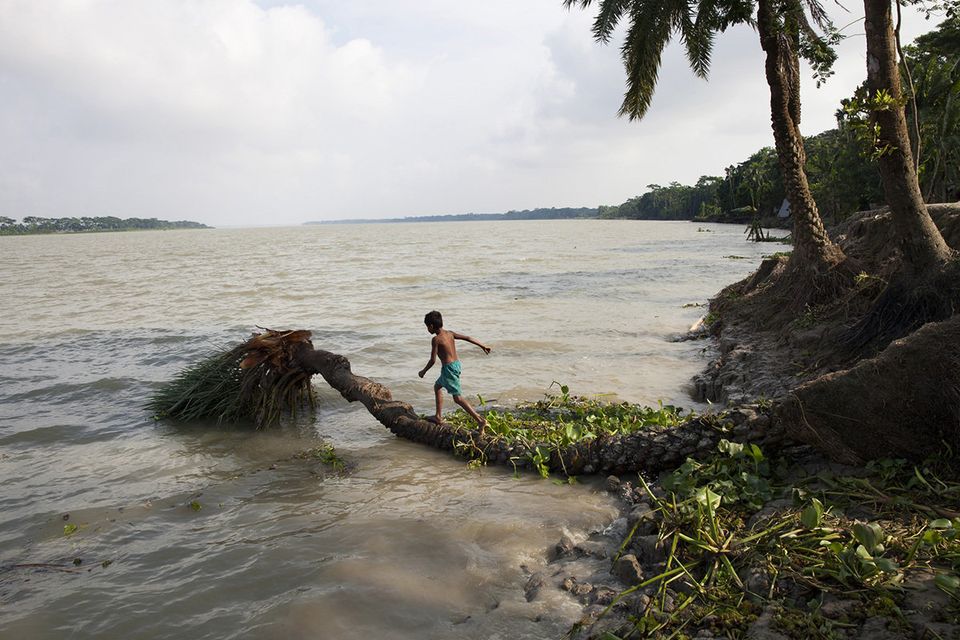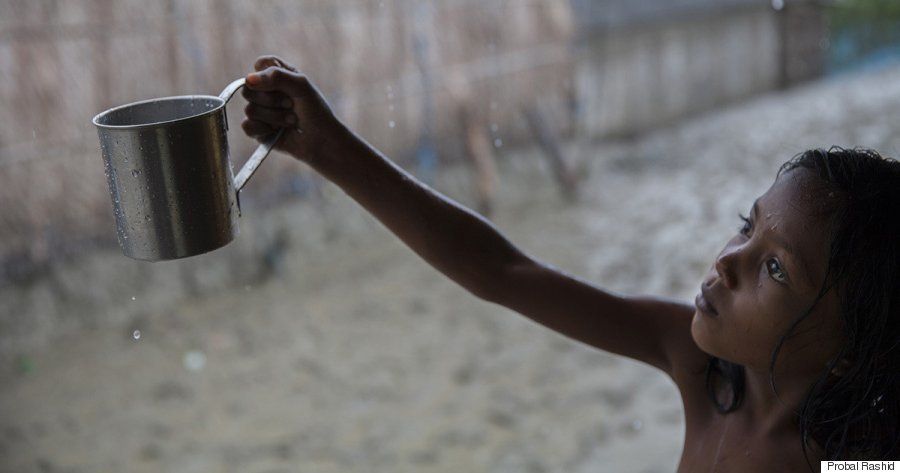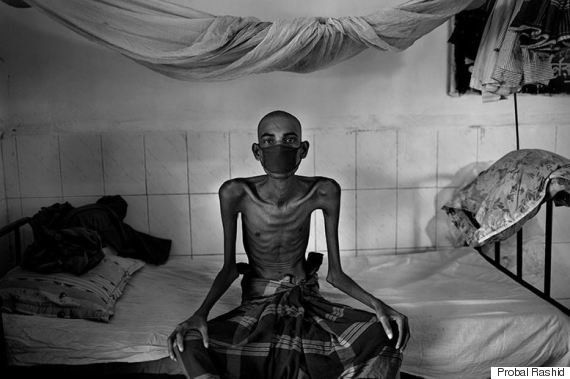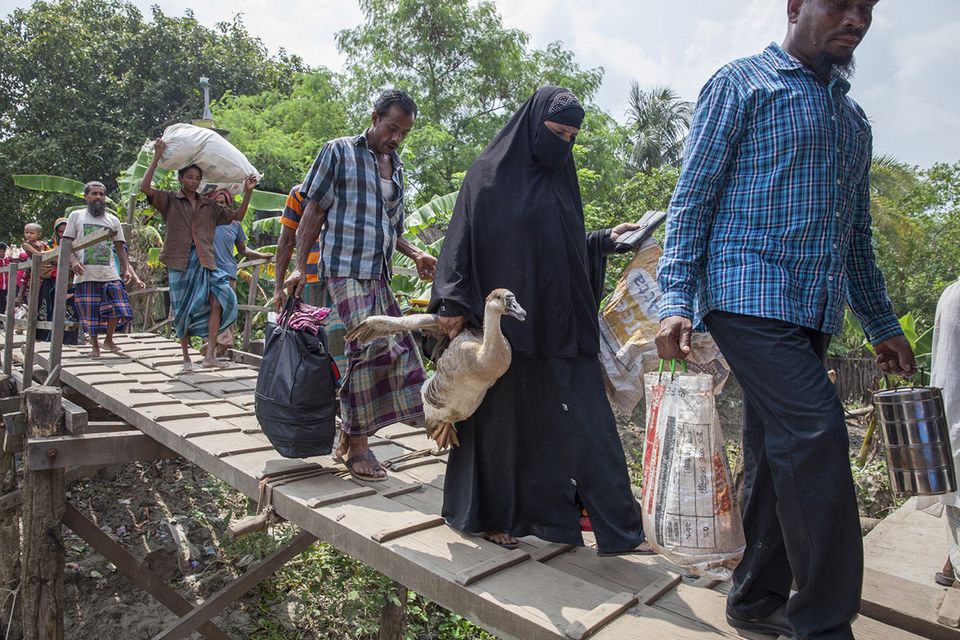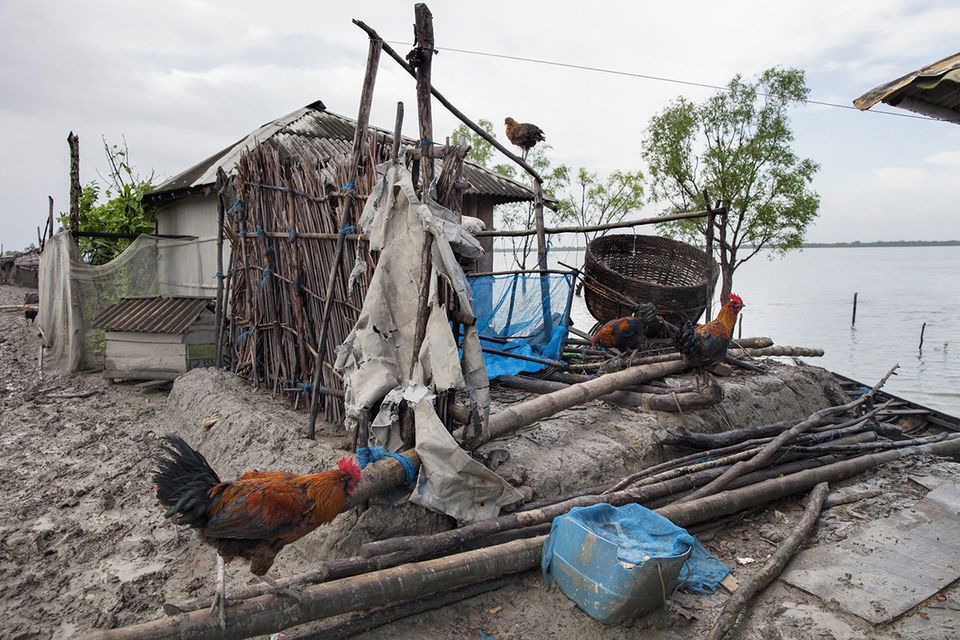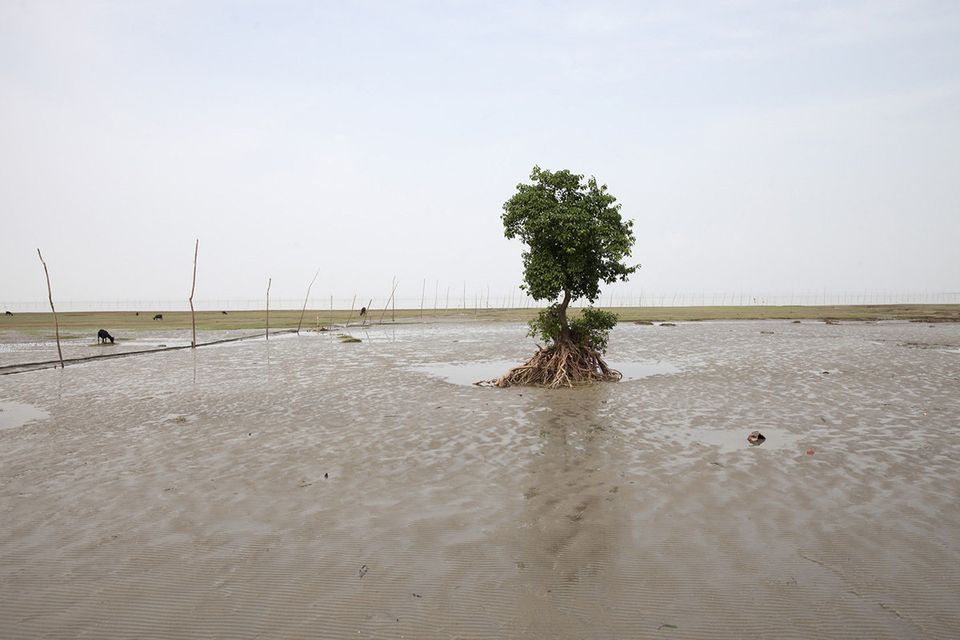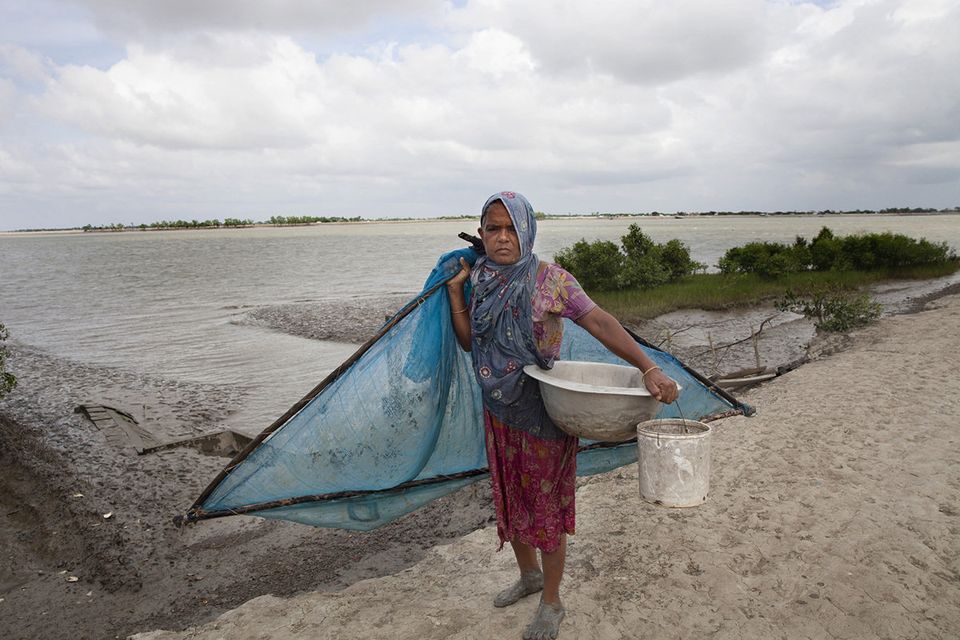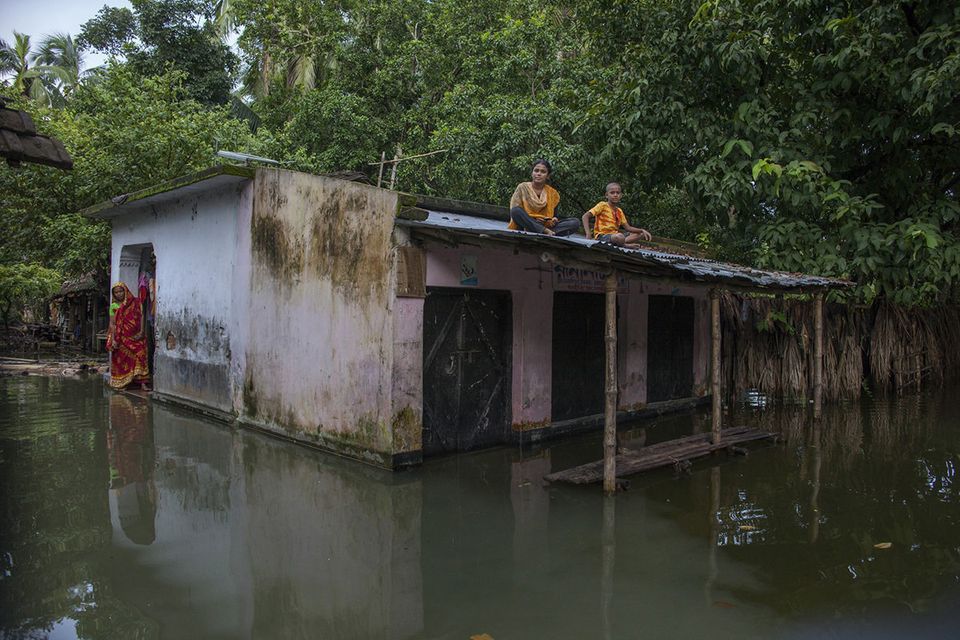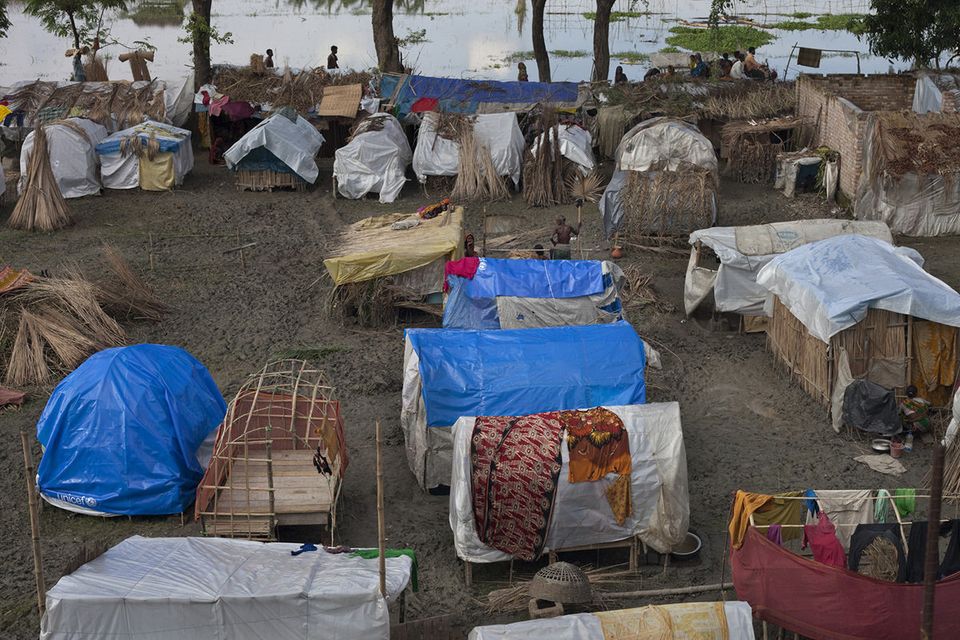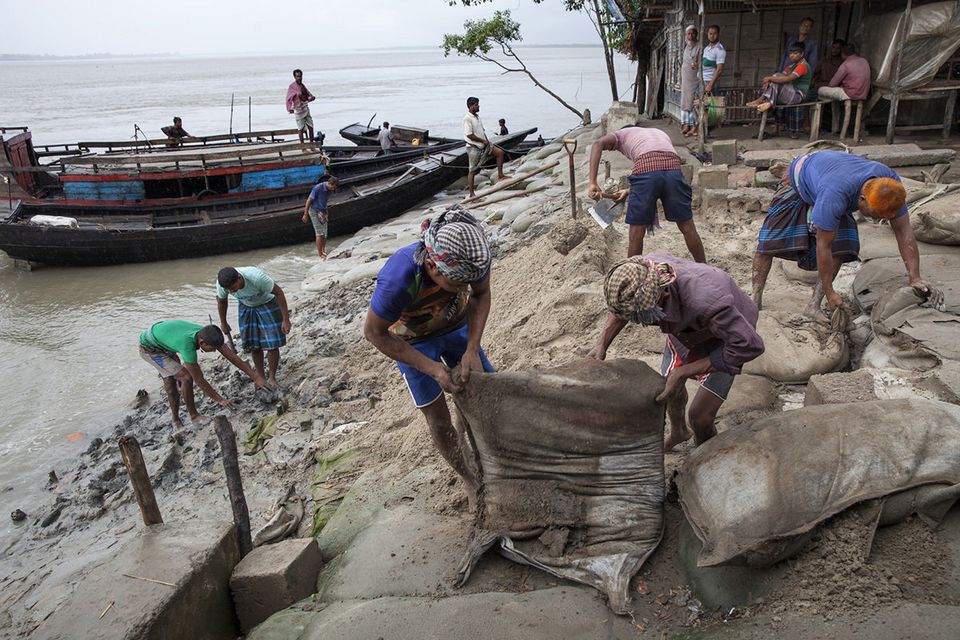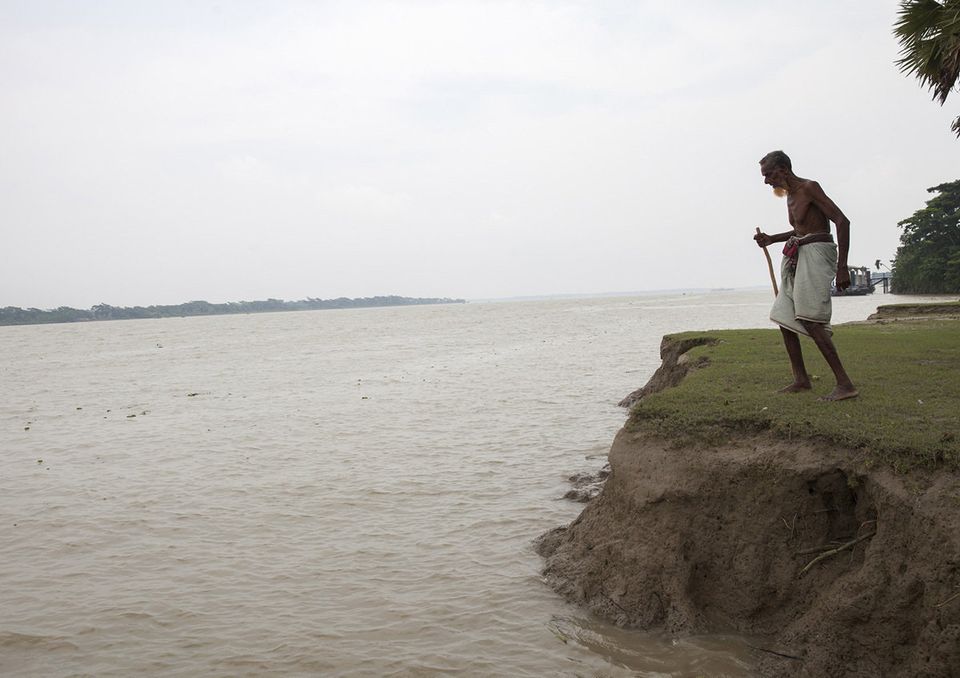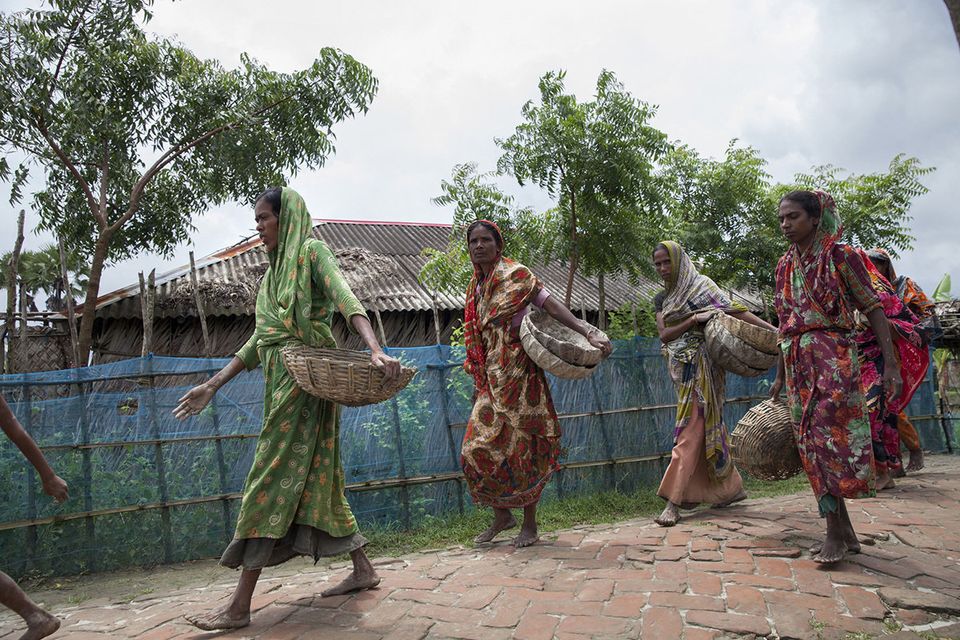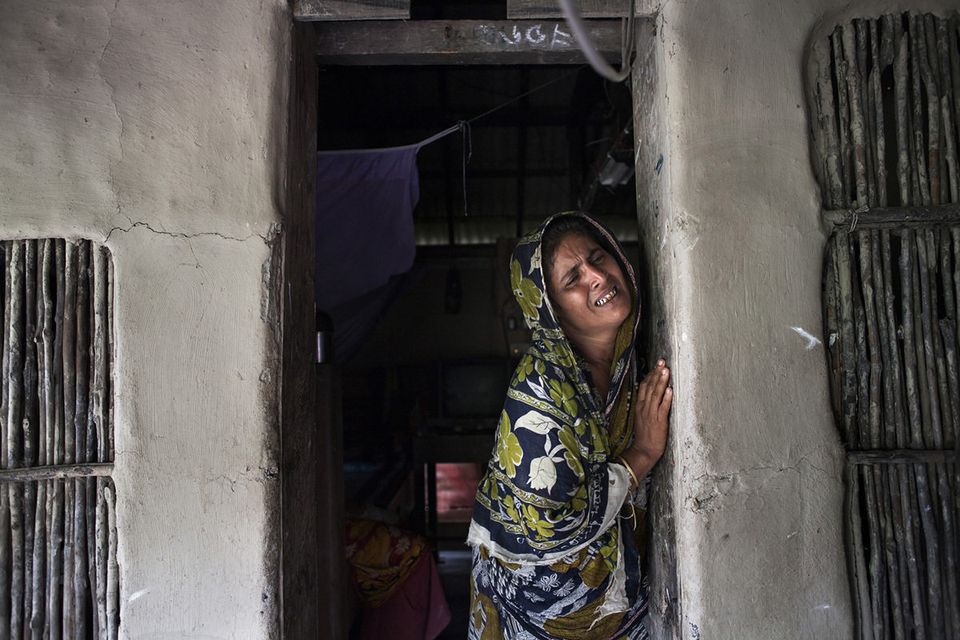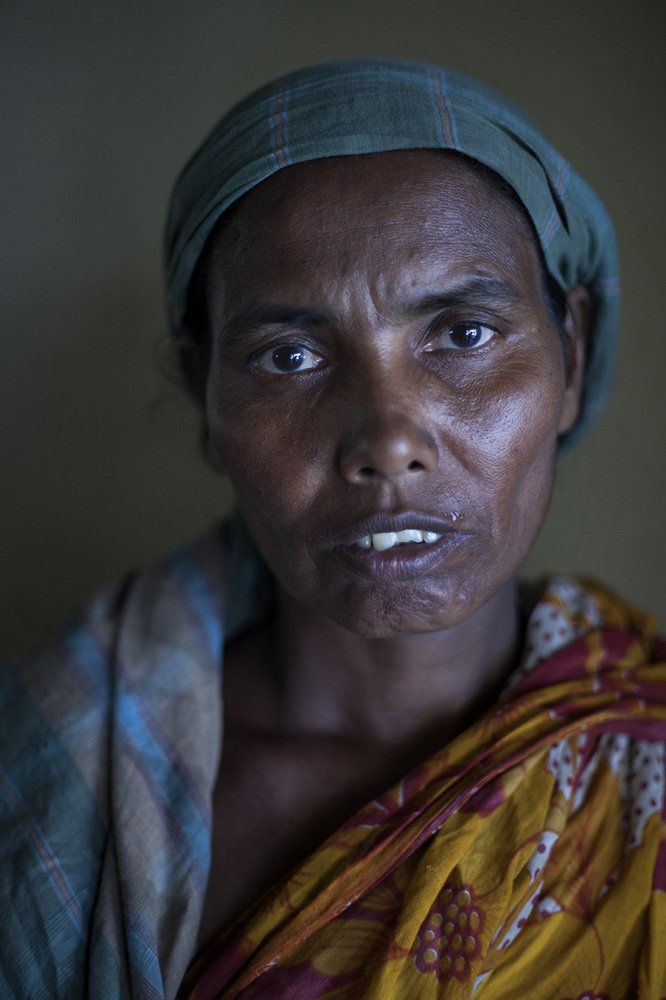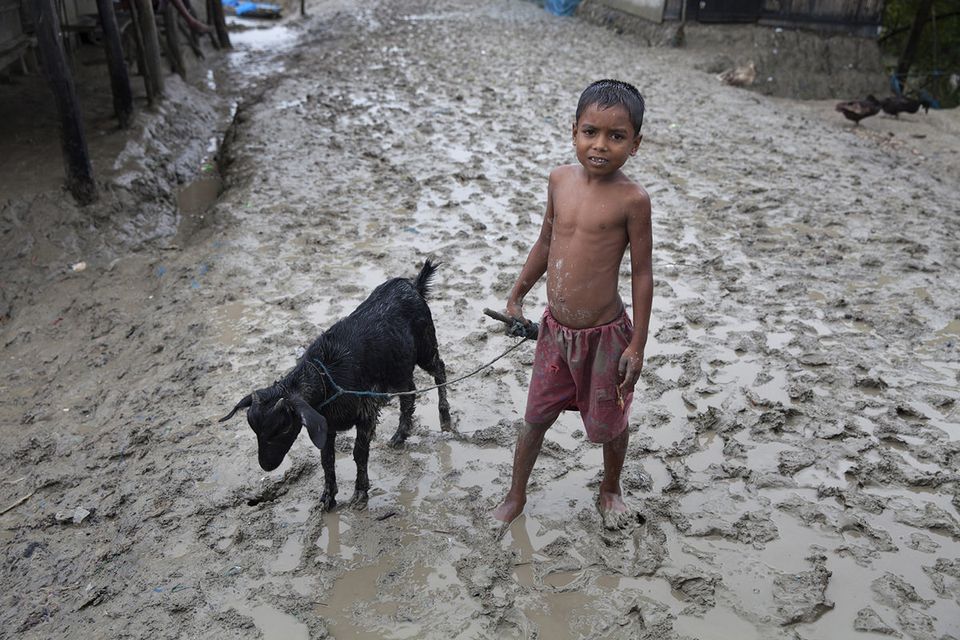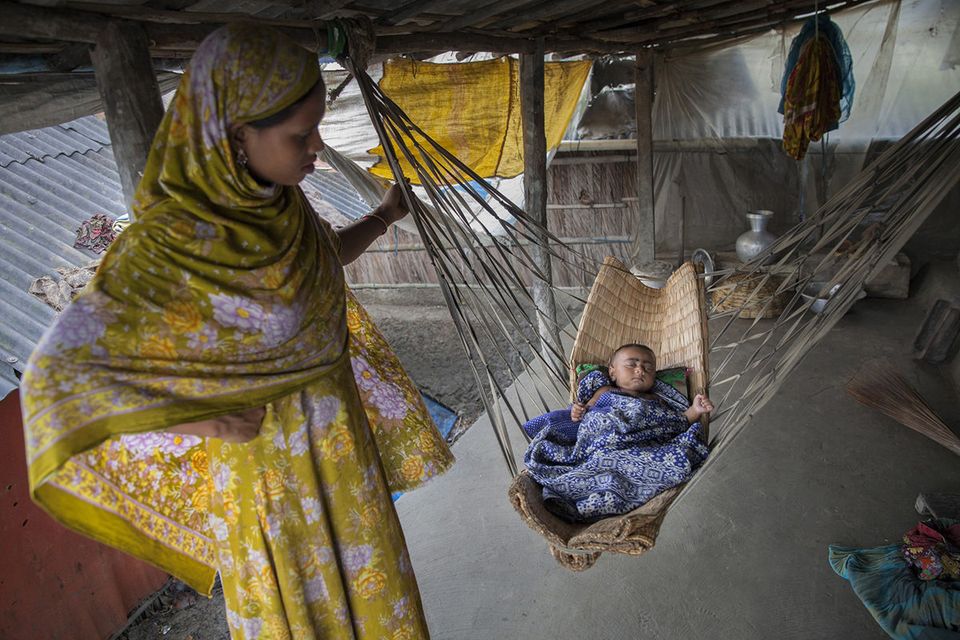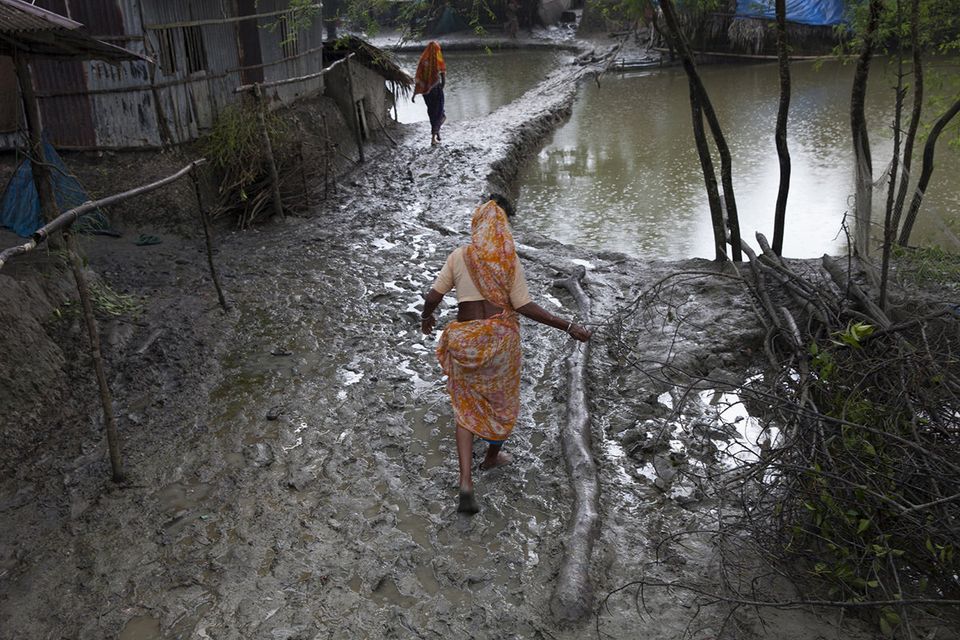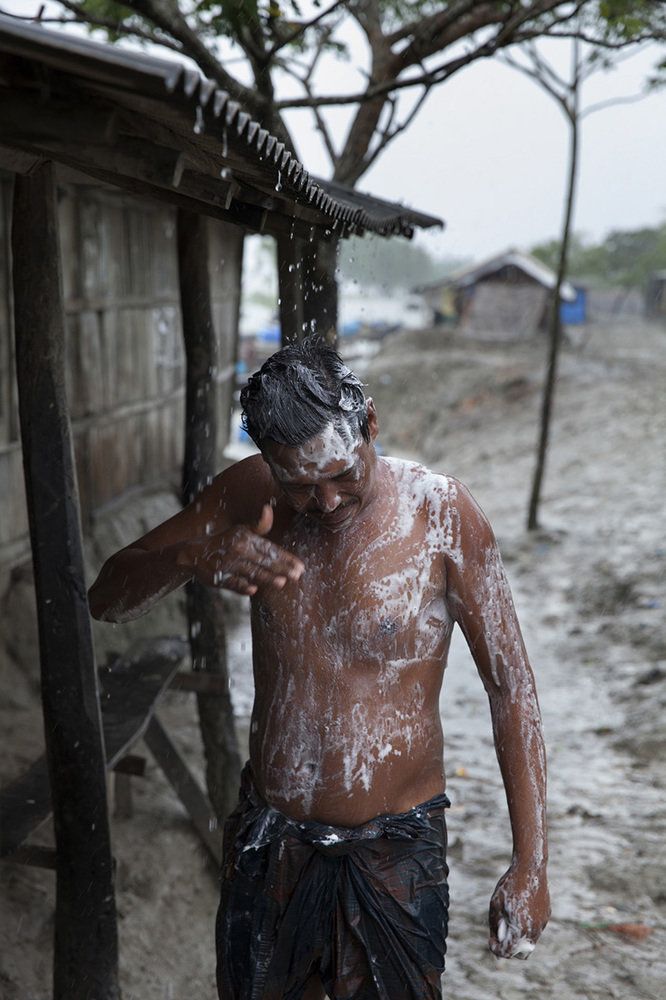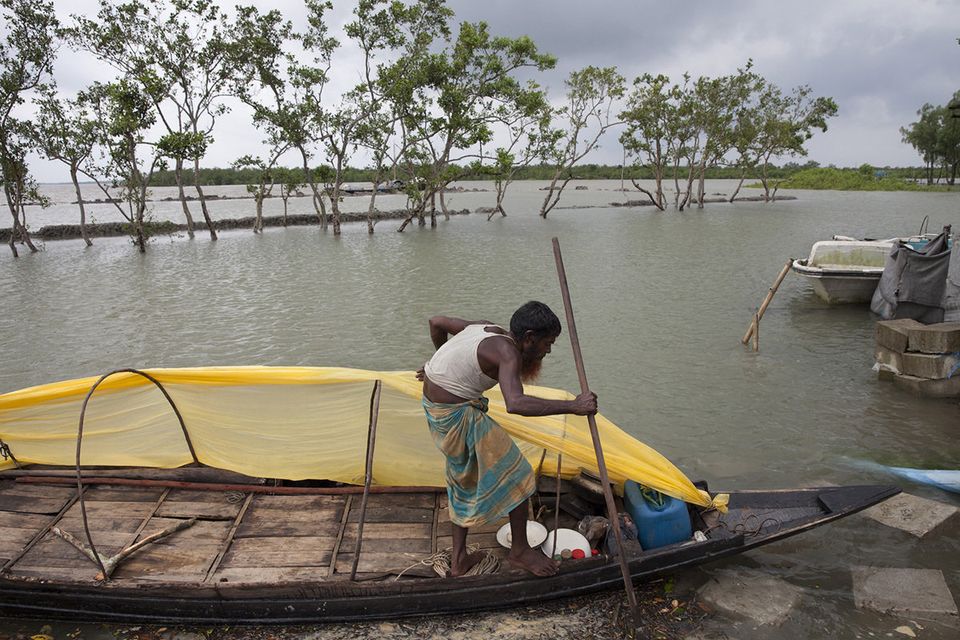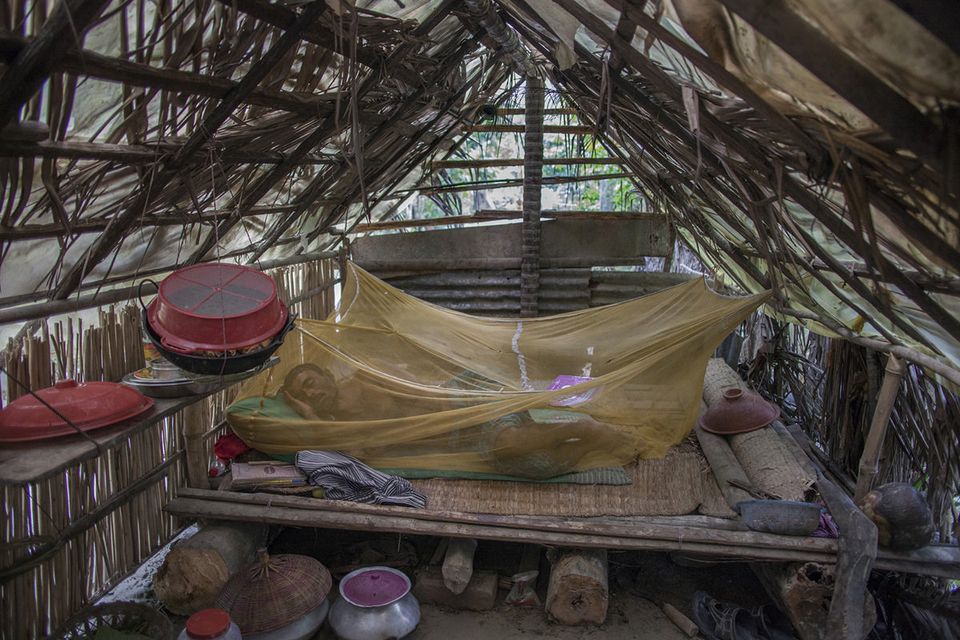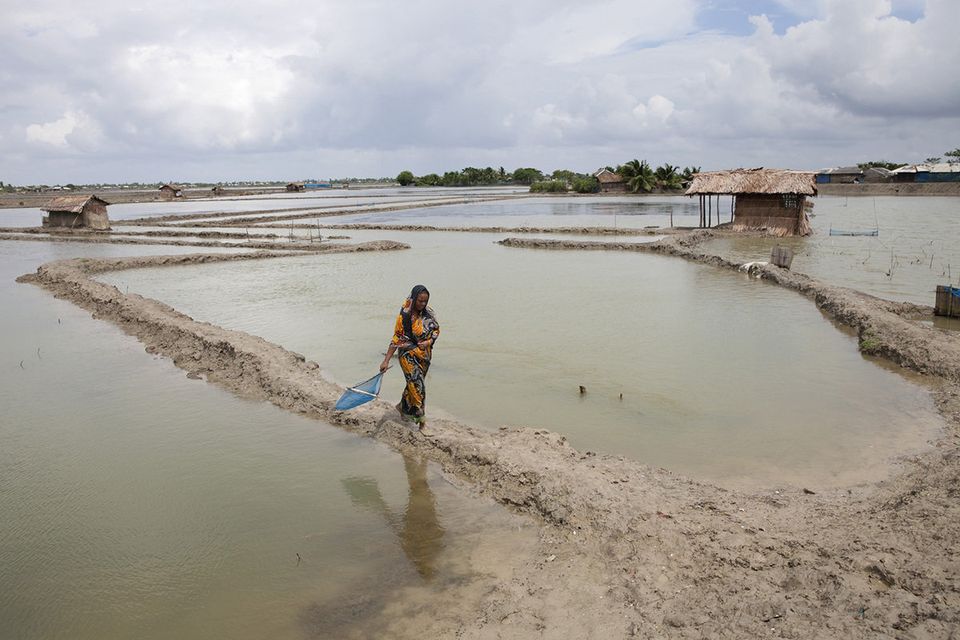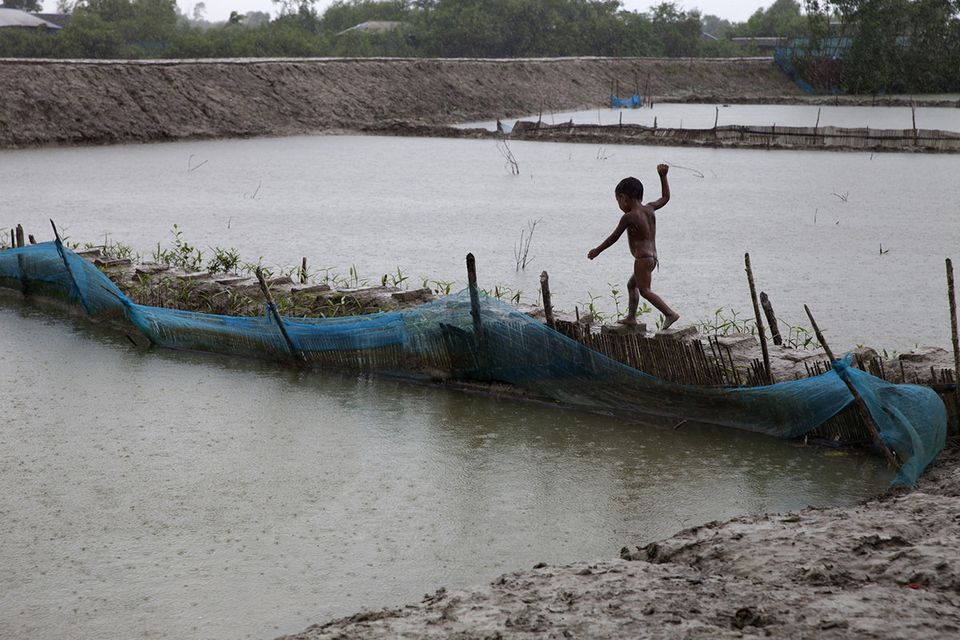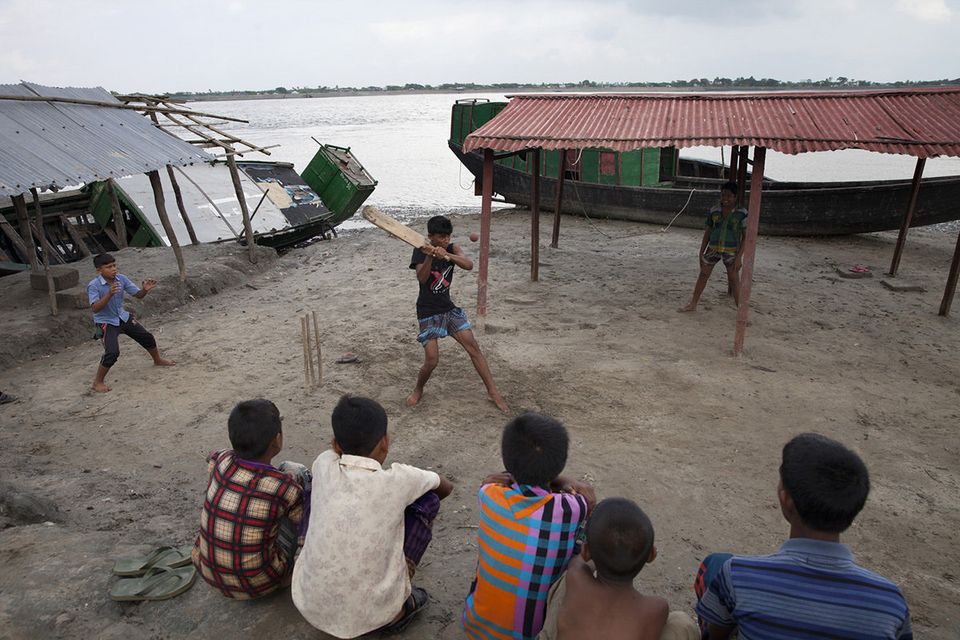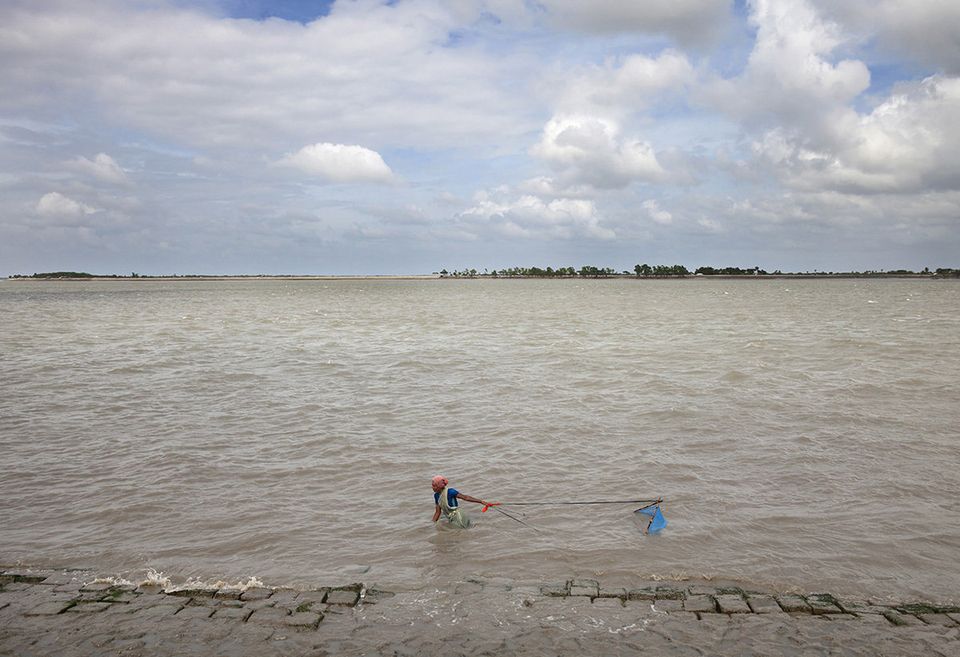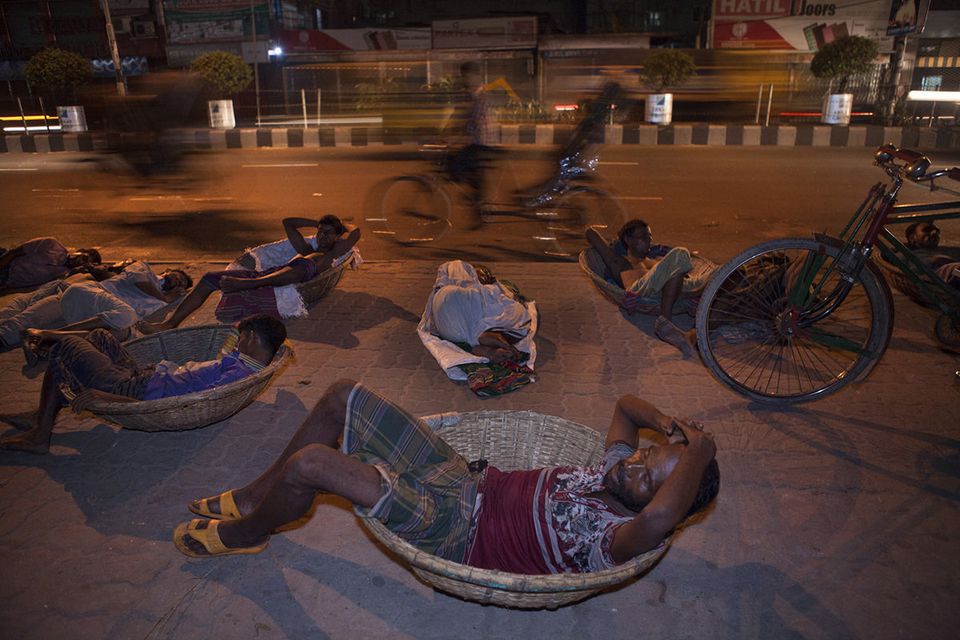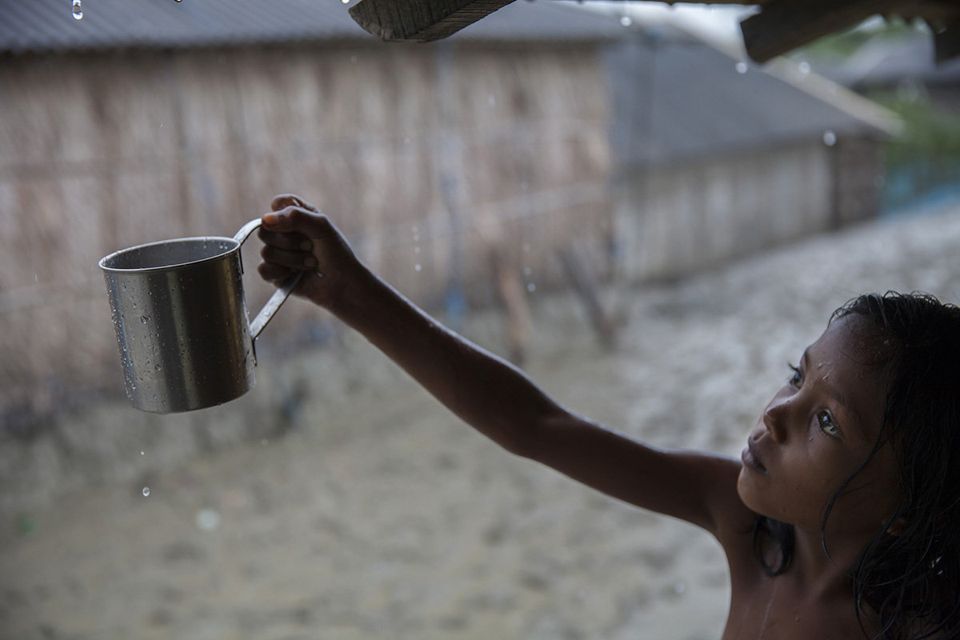Haunting Photos Show Effects Of Climate Change In Bangladesh
The number of climate change refugees in Bangladesh is expected to increase dramatically in the coming decades.
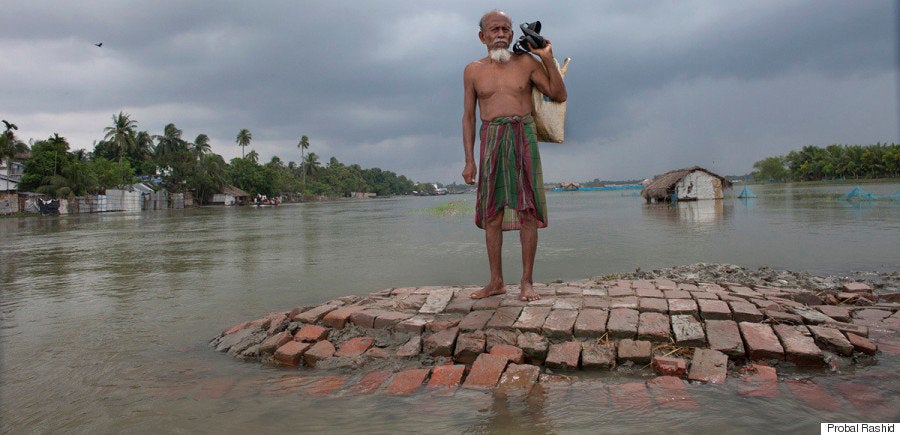
The number of “climate change refugees” in Bangladesh is expected to rise dramatically in the coming decades. Around 20 million people in the Asian nation are at risk of losing their homes by 2050 because of the effects of climate change, like soil erosion, rising temperatures and water pollution. If sea levels rise by just 3.2 feet, one-fifth of the country — which is located on the delta formed by some of Asia’s biggest rivers — is expected to be covered in water. Poor populations are the most vulnerable to the changing conditions.
The people of Bangladesh are already feeling the consequences of climate change in dramatic ways. The rising sea levels combined with increased temperatures create unpredictable weather phenomena and sometimes make existing patterns more extreme.
On Nov. 15, 2007, for example, Cyclone Sidr swept the Bangladeshi coastline with winds of about 155 miles per hour and tidal waves as high as 16.4 feet. It was themost intense cyclone to hit the country since 1991, affecting about 3 million people and destroying tens of thousands of homes. The storm also caused problems with electricity and communication.
HuffPost Greece spoke with Probal Rashid, a Bangladeshi photographer who knows the effects of climate change quite well. Through his photos, Rashid has documented the despair, grief and hardship that follow a major hurricane.
What do people need to know about climate refugees?
The idea of photographing climate change came about when I visited Satkhira, in southern Bangladesh, to cover the flood-affected areas in 2011. Villagers in this area have been suffering one disaster after another since 2007, when Cyclone Sidr hit. Every year, they have to live in rehabilitation camps or temporarily built houses for four to five months during the monsoon.
I visited the area again in 2012 and started to realize that there was a real urgency to make a documentary on climate change. Some regions are always waterlogged. There is water everywhere, but not a drop to drink! The most severe times are the summers and winters, when rainfall is minimum. Those who preserve some rainwater from the previous year’s sources are lucky, otherwise most of the people have to travel long distances to acquire pure drinking water. The traditional way of agrarian life has been changed due to the environmental change.
One of the photos I took is of 15-year-old Rani Begum, who has one daughter and was married at the age of 12. The natural disasters due to climate change — combined with the lack of an adequate government safety net — compound the population’s poverty and drive young women towards child marriage.
A large number of homeless people in Dhaka have lost their homes and properties through floods, river erosion and other natural calamities, and come to the city in the hope of a better future. These people have no place to hold themselves. Their day starts in dump streets and ends at the roads of nowhere.
In your opinion, what do you think should be done to mitigate the problem?
If our goal is to bring global warming under control by reducing the release of carbon dioxide and other heat-trapping greenhouse gases into the atmosphere, we can contribute to this global cause with personal actions. Our individual efforts are especially significant in countries like the U.S. and Canada, where individuals release over 10,000 pounds of carbon dioxide per person every year. We can help immediately by becoming more energy efficient. Reducing our use of oil, gasoline and coal also sets an example for others to follow.
What’s the message of your series on the climate crisis in Bangladesh?
I think my work is there not only to describe the present problems in Bangladesh, but also to warn us of future problems before it’s too late — this series casts its gaze on the devastating effects that rising sea levels will have on the world’s coastal inhabitants.
What makes you different from other photographers? How would you describe your photography style?
Every photographer develops her or his own strategy in their own unique way, be that interning, assisting, graduate school, job training, etc. Understanding how each photographer develops their particular style is important in figuring out your own approach to photography.
For me, photography is my language to access, to communicate and to identify myself. My photographs explore the relationship of humanity and environment in a simple manner. I make pictures that call attention to things that other people overlook. This exploration of the overlooked helps me to engage more deeply with where I am in space and time. When I am photographing people I try to see what is on the inside as well as what is on the outside, this is where I find true expression. I truly have a strong desire and enthusiasm for photography and that intensity is delivered into each image I create.
Which photographers influenced you, and how did they influence your thinking, photography and career path?
American renowned photographer Steve McCurry’s photo “The Afghan Girl,” which was taken in 1984 and published the next year, influenced me most during my days as a student of photojournalism. Along with this, the photography of Henri Cartier-Bresson, Ansel Adams, Sebastiao Salgado, Yousuf Karsh, Jonas Bendiksen and many others motivate me in carrying on my job. I think there’s a common theme we’ll find among them all, and that is their faithful commitment to their vision.
What’s favorite portrait you’ve taken?
A portrait of Suruz Ali, 25, is my favorite. When I met Ali in a hospital during my project Tuberculosis in Bangladesh in 2014, I felt that his situation showed the real scenario in our vulnerable society. The purpose of this image is to interpret the disease among the most vulnerable sections of the population and to increase the awareness of the general public regarding tuberculosis through photographic display using print and social media.
What motivates you to continue taking pictures?
The satisfaction from knowing that there are people who appreciate my images, and the positive feedback that I receive keeps me going. But most of all, I am motivated by my way of documenting the people and things that I’ve encountered.
How do you prepare for your stories?
When I start a personal project or receive an assignment, I do research as much as I possibly can about my subjects’ culture, and collect information from books, newspapers and the Internet. Then I visit the place, speak to people and make them aware of my presence and what I am doing.
Does a photo say more than a thousand words?
Yes, I should think so. When we publish a photo on the Internet, the entire world becomes stirred and moved. You may consider yourself as an example. You don’t know me personally. But you know me now through my photographs.
Some photographs screamed so loudly that the entire world stopped to take notice. Some photographs have touched humankind in many different ways and help shape the future for the better. For example, the picture of tragic Aylan Kurdi’s fate has sent shock waves across the globe.
Scroll down to see more of Rashid’s work documenting the effects of climate change in Bangladesh.
This story originally appeared on HuffPost Greece and was translated into English.
